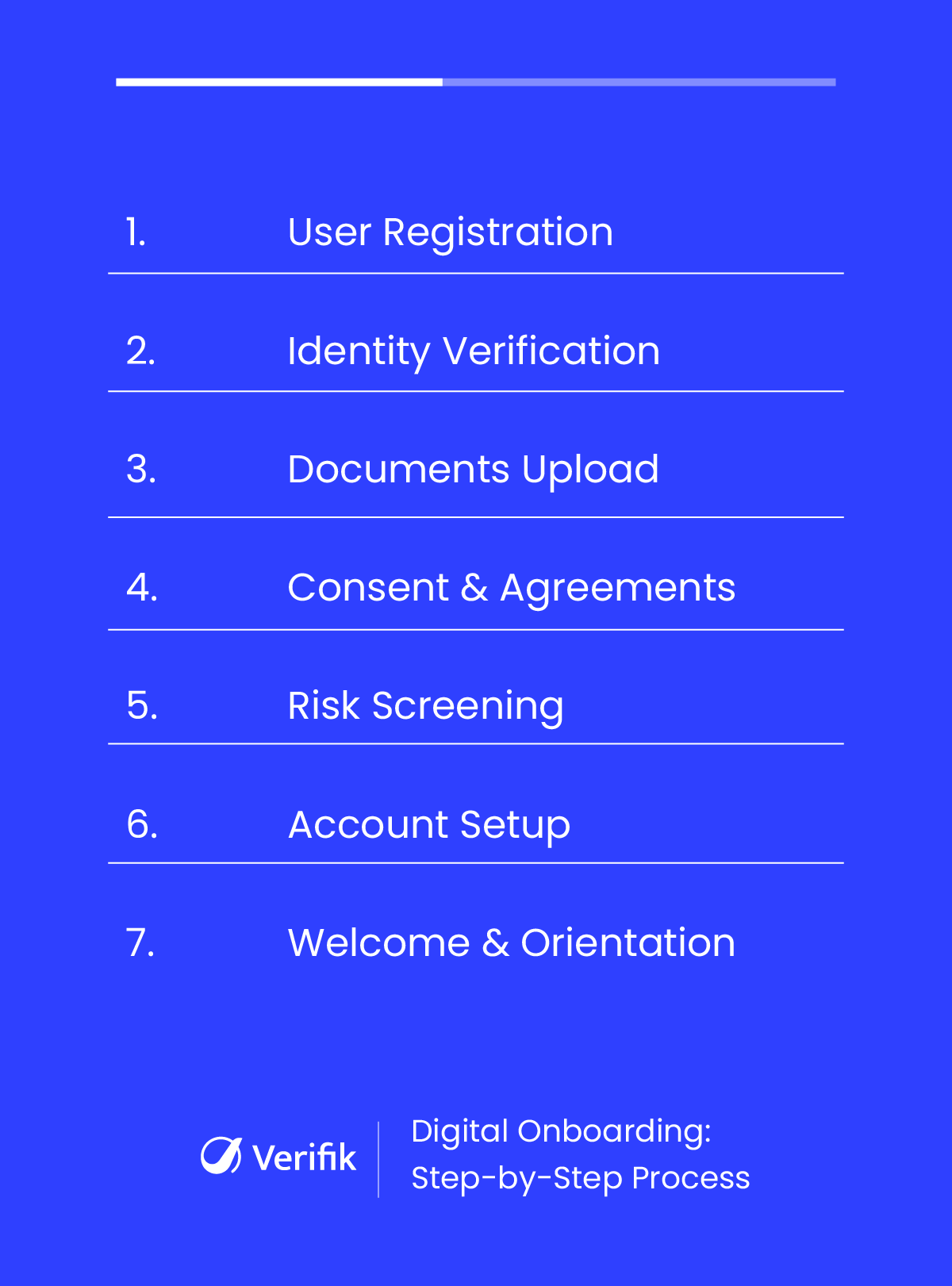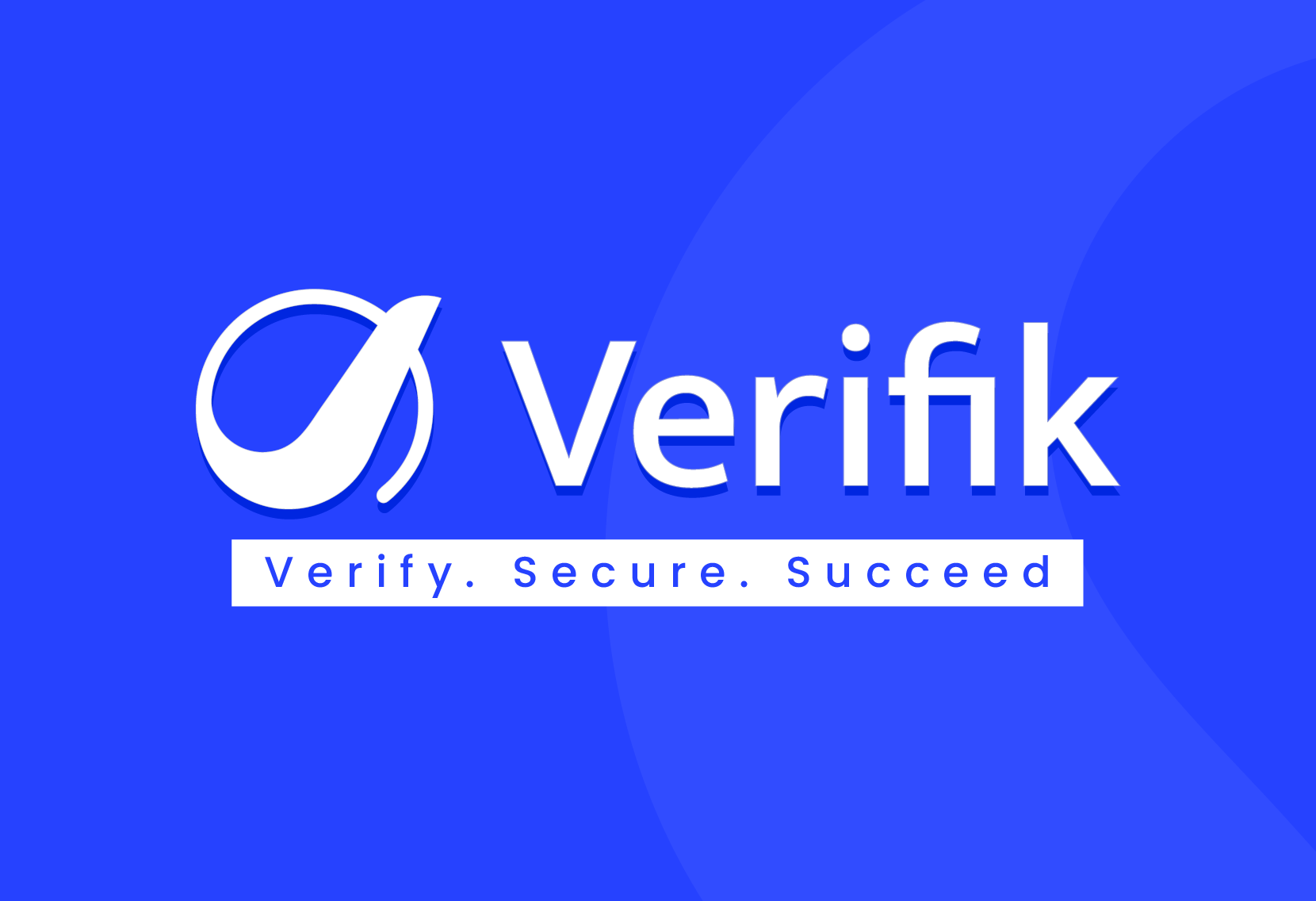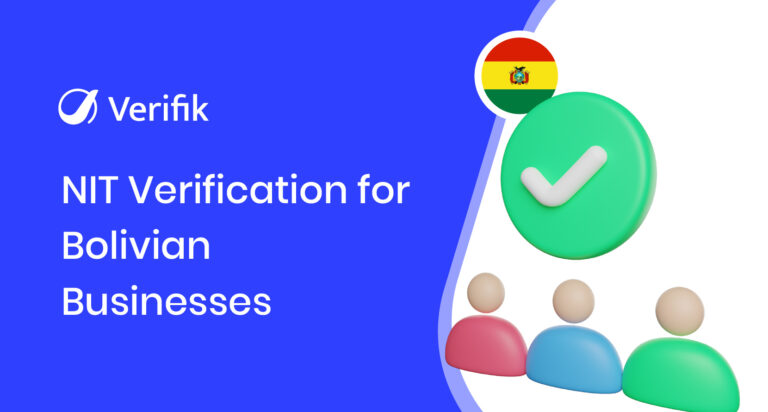Customer onboarding is where many businesses lose valuable leads. Lengthy forms, back-and-forth emails, and manual checks create friction that often drives people away before they complete the sign-up.
Digital onboarding addresses these challenges by moving the entire experience online. From identity verification to document submission, every step takes place through a secure digital interface. Customers can sign up quickly, and businesses can stay compliant without the delays that come with traditional methods.
In this blog, we’ll break down the step-by-step process that a modern digital onboarding solution follows. Understanding these stages will help you choose an onboarding system that keeps users happy and your business running smoothly.
What is Digital Onboarding?
Digital onboarding refers to the fully online process of registering and verifying new customers or users. It replaces traditional onboarding methods that often rely on paper forms, face-to-face meetings, or manual checks.
Instead of asking users to visit a physical location or submit documents in person, digital onboarding allows them to complete the entire process from their computer or mobile device. This typically includes identity verification, document uploads, form completion, and consent collection, handled through a secure and guided interface. By using tools like biometric checks, eKYC, OCR, and real-time data validation, a digital onboarding solution helps reduce delays, minimize fraud risks, and improve the overall user experience.
Many industries such as banking, telecom, and e-commerce now rely on digital onboarding to save time, reduce errors, and provide a better customer experience.
Step-by-Step Breakdown of the Digital Onboarding Process
Digital onboarding streamlines the way businesses welcome new users in a secure and scalable way. Following are the key steps involved in a typical digital onboarding process.
Step 1: Initial User Registration
The digital onboarding process starts with capturing basic user information. This could be as simple as name, email, and phone number, or more detailed depending on the business needs. Registration forms should be available across multiple platforms, such as websites, mobile apps, or kiosks, to reach users wherever they are.
Keeping this step simple and quick is important to avoid losing users early. Too many fields or complicated forms can cause frustration and drop-offs.
Step 2: Identity Verification
Once basic details are collected, the next step is to confirm the user’s identity. This is especially important in industries where compliance, security, or fraud risk is high. Verification methods typically include scanning government-issued IDs, passports, or utility bills.
To enhance accuracy and reduce fraud, biometric checks such as facial recognition, fingerprint scanning, or liveness detection are often used. Liveness detection ensures the person is physically present, not using a static photo or video. OCR (Optical Character Recognition) helps extract text from documents automatically, reducing manual input and human error.
These verification steps are designed to meet KYC (Know Your Customer), AML (Anti-Money Laundering), and other regulatory requirements while ensuring the process stays smooth and fast for the user.
Step 3: Document Submission
With identity verified, users are asked to upload any required supporting documents. These vary by use case but often include proof of address, income slips, business licenses, or insurance documents. Uploads should be accepted in various file formats like PDF, JPEG, or PNG, and the system should work seamlessly on both mobile and desktop devices.
Clear guidelines and document checklists help users avoid mistakes or incomplete submissions. Technologies like OCR and auto-cropping further improve the experience by pre-filling data fields and reducing back-and-forth.

Step 4: Consent and Legal Agreements
Before proceeding further, users need to agree to key legal documents such as terms of service, privacy policies, and data usage statements. In some industries, video KYC or e-signatures may be required for added assurance.
Digital consent should be clear and unambiguous. Most systems use checkboxes, e-sign tools, or facial confirmation for this step. Audit logs are created to keep a traceable record of when and how consent was given, which is especially important for compliance audits or legal disputes.
This step ensures both transparency and legal protection for businesses and users alike.
Step 5: Risk Assessment or Background Screening (If Applicable)
For industries like finance, insurance, or government, onboarding may involve risk profiling or background checks. This could include credit scoring, identity validation against global watchlists, or fraud detection based on behavioral patterns.
Automated systems flag high-risk profiles in real time, triggering manual review if necessary. These tools help organizations meet KYC/AML obligations and reduce exposure to fraud or non-compliance penalties.
While critical, this step should run in the background where possible to avoid unnecessary delays in the onboarding flow.
Step 6: Account Setup and Personalization
After clearing the risk checks, users proceed to set up their accounts. This involves creating usernames and passwords, selecting preferences, or choosing service tiers. Some platforms also assign roles and permissions based on the user type, such as admin, customer, or staff.
Progressive disclosure is often used here, where additional information is gathered over time instead of all at once to reduce user fatigue.
This step helps tailor the product or service to individual user needs.
Step 7: Welcome and Product Orientation
Finally, the user is welcomed and introduced to the platform. This is your chance to make a strong first impression. A welcome screen, short walkthrough, or tooltips highlighting key features can help users feel confident and supported.
Some companies also send a welcome email with helpful links, tutorials, or contact info for support. Interactive onboarding checklists or videos are commonly used to guide users through their first steps.
A smooth orientation reduces early drop-offs, increases engagement, and builds trust from the very beginning.
Wrapping Up
A well-designed digital onboarding process helps companies attract, verify, and retain users efficiently. It saves time, reduces costs, and builds trust from the very beginning. By following the steps outlined in this guide, businesses can create an onboarding journey that is fast, secure, and user-friendly.
Experience Smarter Digital Onboarding with smartENROLL
smartENROLL by Verifik is built to streamline onboarding without compromising security. With advanced facial recognition, liveness detection, OCR, OTP, and real-time database screening, it delivers fast and compliant identity verification. It supports a wide range of documents and languages, making it scalable for global teams and high-risk industries.
Book your free demo of smartENROLL today and see how effortless secure onboarding can be!













